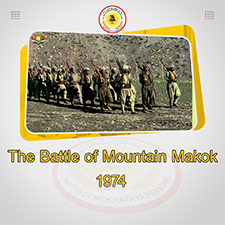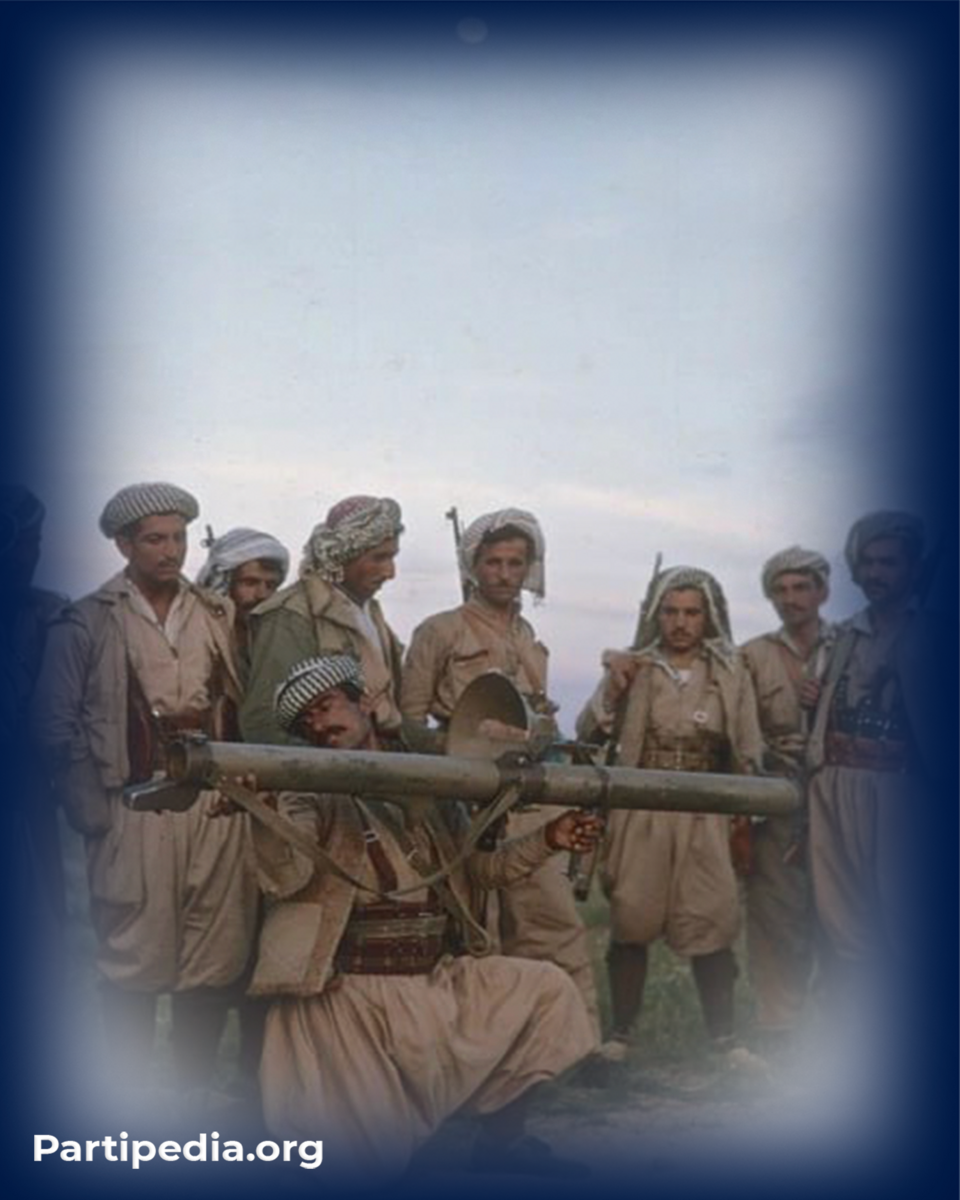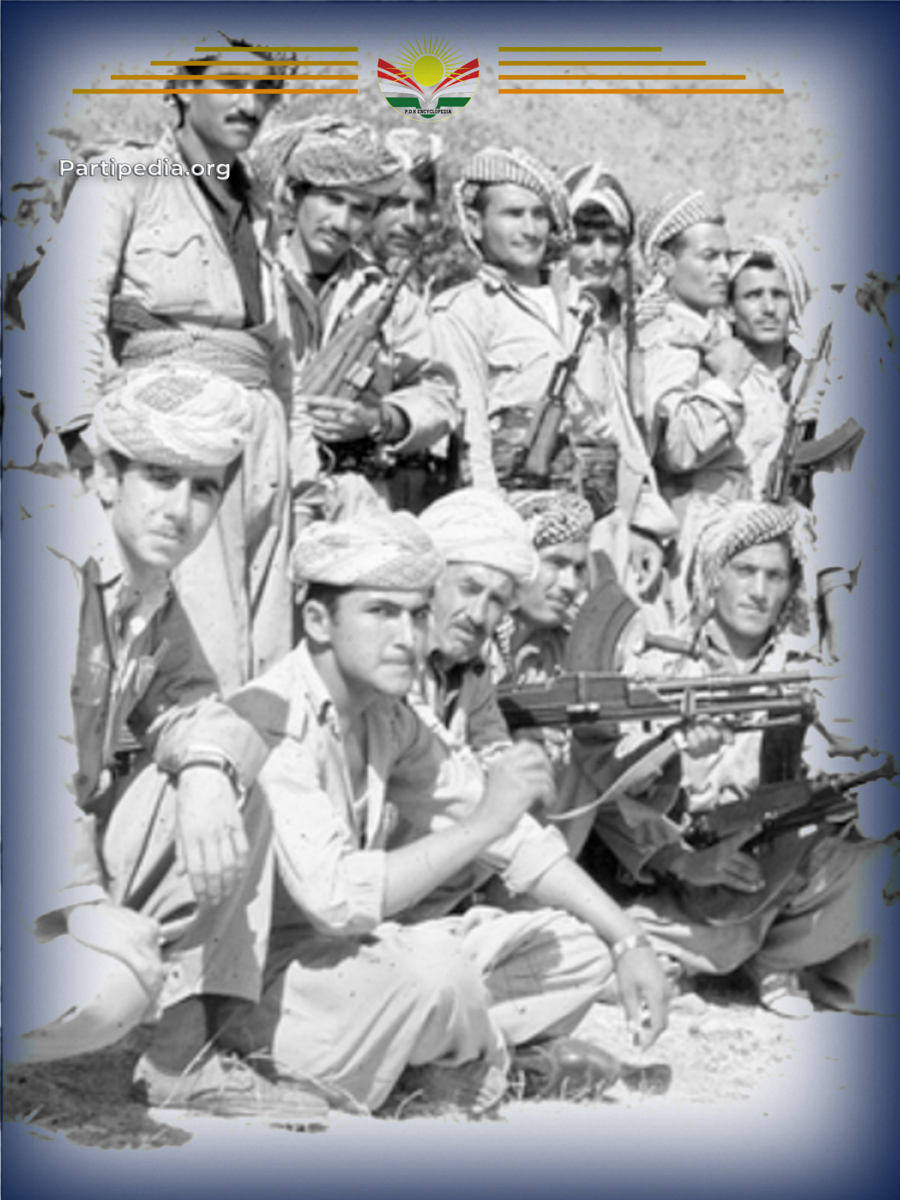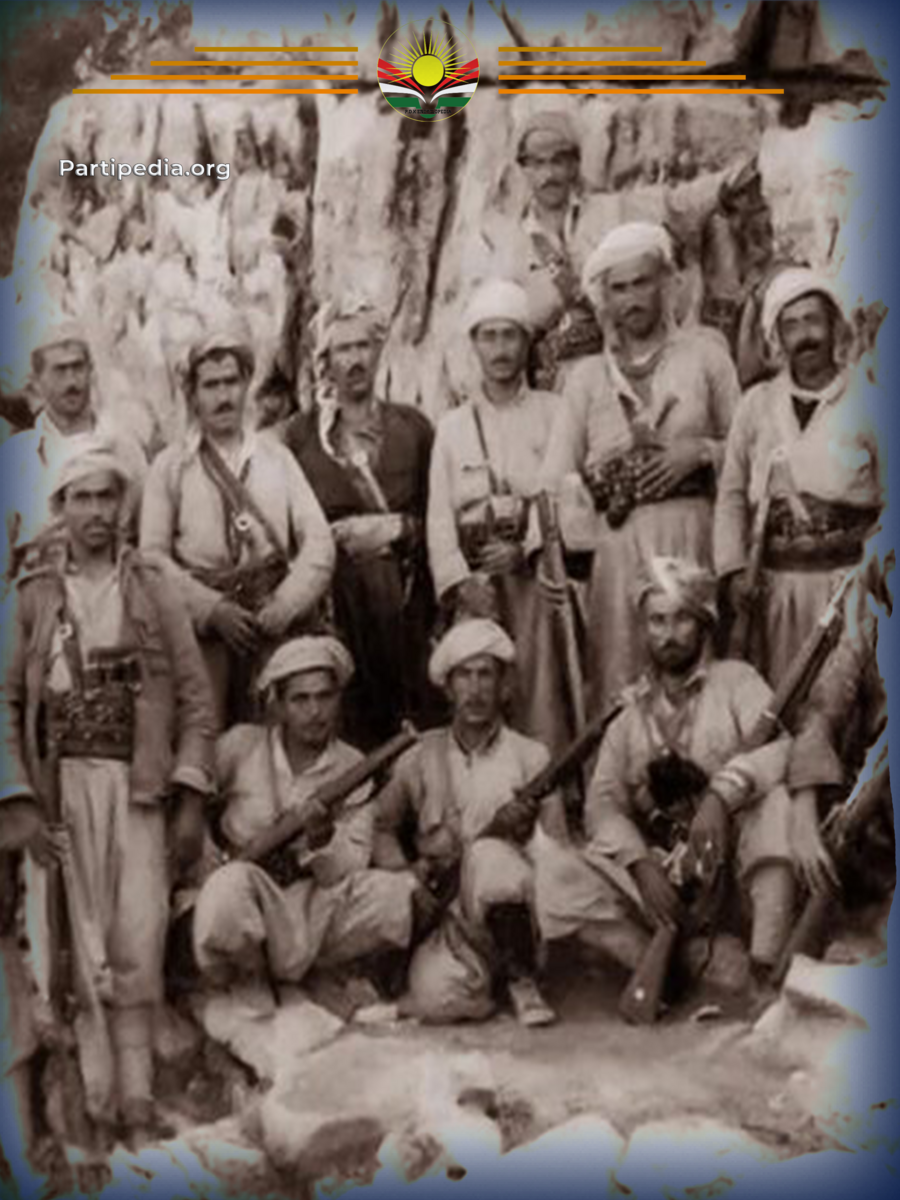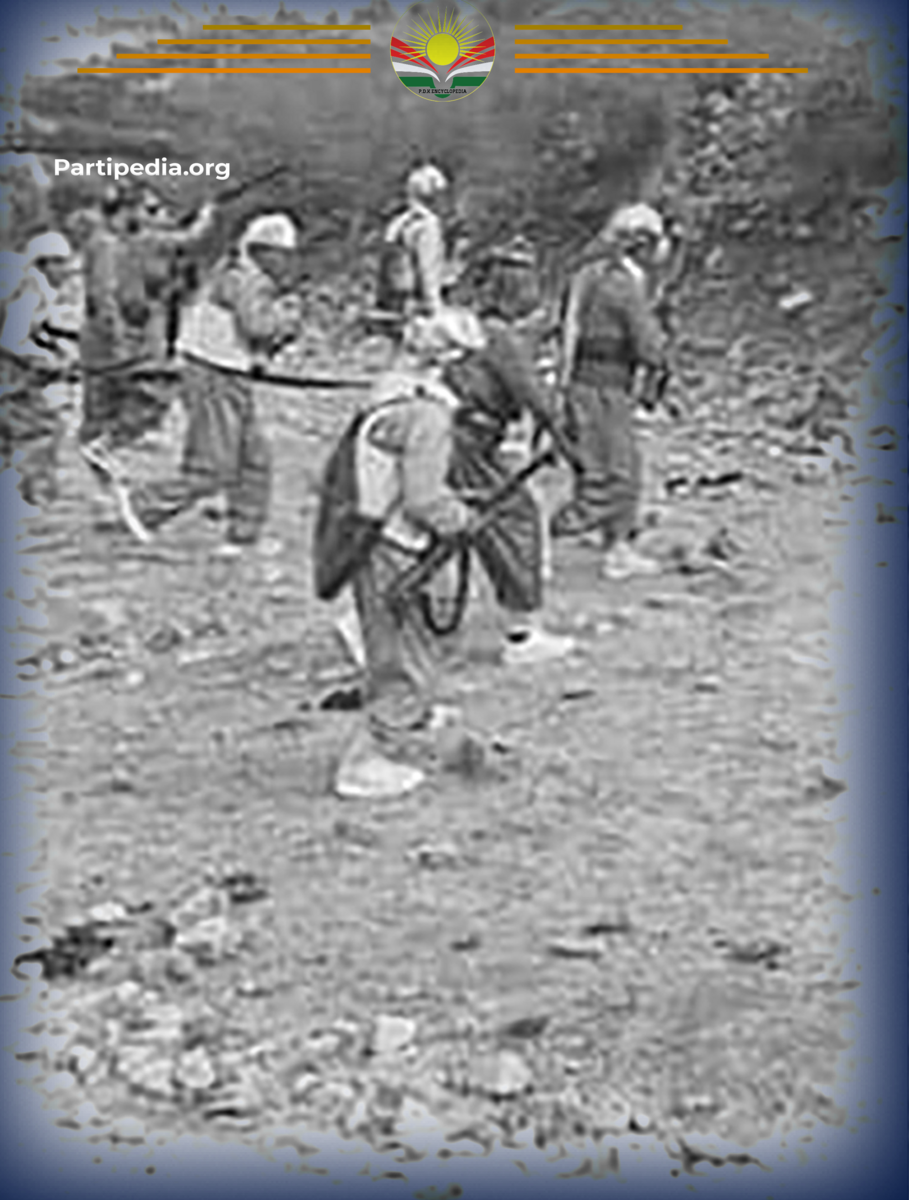The Peshmerga forces joined the Betwata forces and the Pishdar front to form a strong line of defense in a semicircle after retreating from the Safin Mountain frontier to the Balisan Valley. Moreover, the line of defense from Qaladze to Betwata kept the Iraqi army away from the Balakayety region, which served as a headquarters of the revolutionary leadership.
The infantry forces of the Iraqi army moved to open the roads from Koya to Chawarqurna toward the end of August 1974. They initially sought to conquer Mount Makok and Mount Shishar when they first arrived in the area to increase their control over the Betwen plain in order to establish their dominance over the area. Additionally, they intended to withdraw the Peshmerga forces from Makok and advance to Karokh Mountain, which is directly across from Qasre Village. Furthermore, they intended to approach Hassan Beg's peak by taking over the Zozk and Sartiz mountains from the Ruandz front. And from there they would advance and take over Galala. Thus, they can blockade the revolutionary leadership in the Balakayety region. In addition, the Iraqi army wanted to ease the burden on its forces on the Ruandz front in the attacks on Mount Makok and Raqqa Valley by transferring part of the Peshmerga forces to the battle front in the Betwata area.
To carry out their strategy, the Iraqi army's massive force, which included two military divisions and mercenaries (jash), attacked Makok Mountain behind Sarwchawa and Kepki Khanzad. Moreover, the Peshmerga forces that were stationed in the line of defense were the 2nd Battalion of the Erbil Plain Forces under the command of Saadi Aziz, the first Battalion of the Safin force under the command of Karim Faqe and another branch of the Erbil plain force under the command of Haji Ali. As the soldiers advanced to Makok Heights, the Peshmerga resisted them and many Iraqi soldiers were killed and wounded. Others fled the battlefield. The following day, the army launched another assault on Makok Heights, this time taking the right side of the mountain.
On August 30, the Iraqi army reorganized and resumed its offensive with the assistance of tanks, artillery, and aircraft. They began by heavily bombing the Peshmerga positions, employing Katyushas for the first time. They then attacked Mount Makok until they reached Saruchawa and the surrounding villages. Fighting off the army's ferocious assault was a small Peshmerga force. Furthermore, armed with heavy weapons and aircraft on September 4 and assisted by mercenaries (jash), the army attacked the heights of Andik and Anguz, taking control of them in the evening.
Right at that point, general Rashid Sindhi quickly sent a message to the local commanders, requesting that a Peshmerga force join the battle front as a support force and scale the mountain. The support forces included a battalion of Safin forces under the command of Arif Ali Mawludi, Battalion 2 under the command of Sayed Kaka of the Erbil Plain Force. Furthermore, these Peshmerga forces climbed Mount Makok on the night of September 6-7, 1974 and re-established their defensive positions while the Iraqi army continued its attacks with the support of air force and artillery. This time, however, the Peshmerga maintained their strong defense, resisted all attacks, and prevented the army from taking control of the Makok Mountain. Again, at 11 pm on September 8, 1974, the Iraqi army attacked Mount Makok again and continued until the morning. This time the Peshmerga did not allow the army to win. As a matter of fact, the Iraqi army suffered a major defeat and lost over 50 solidiers. Moreover, for two months, the Iraqi army was unable to accomplish its goals because of the Peshmerga forces' defense of the area. This was due to the expertise of the commanders in the area and their experience in fighting and tightening the positions by laying mines. During these two months, the Iraqi army launched 15 attacks on the Peshmerga forces with heavy forces of jash, Maghawir and special forces. The Peshmerga suffered severe losses in terms of people and property in each of these attacks, but they also made significant gains. For example, 10 weapons were destroyed in one attack, 150 Kalashnikovs, three mortars, four barbed wires and two Russian snipers. One entire platoon was even destroyed in one of the attacks.
In mid-September, the Iraqi army began shelling the Peshmerga positions at 12:00 pm, after that a regiment of special forces (Qwat Khasa) attacked the positions of the Sayed Kaka Battalion. The Peshmerga appeared to have been aware of the attack in advance because they hid from the soldiers until they were close enough to do serious harm. They attacked them and violently shook them when they were 100 meters away from them. The army's assault was therefore unsuccessful. More than 150 soldiers were killed and 100 more were wounded by the Peshmerga. Additionally, the Peshmerga gained access to numerous weapons and rounds of ammunition. This regiment of the Iraqi army was completely destroyed. The casualties of the Peshmerga were (9) martyrs and (27) wounded.
The Peshmerga's resistance to a powerful army with a quarter of a million modern weapons continually thwarted government attempts to put an end to the Kurdish revolution. They started the offensive with this preparation, hoping that they could implement their plans and destroy the revolution in a short time. They set September as the deadline for their victory over the revolution. After that, they changed the deadline to December. However, until the agreement of March 6, 1975, when they were able to bring an end to the Aylul Revolution, all of these illogical assertions were ineffective and did not alter the situation.
Resources:
-
مسعود بارزانی: بارزانی و بزوتنەوەى ڕزگاریخوازی کورد، بەرگی سێیەم، بەشی دووەم، شۆڕسی ئەیلوول ١٩٦١-١٩٧٥، چاپى یەکەم – هەولێر، ٢٠٠٤.
-
خوڕشید شێرە: خەبات و خوێن، بیرەوەریەکانى ساڵانى پێشمەرگایەتى، چاپخانەى حاجى هاشم، چاپى سێیەم، هەولێر – ٢٠١٥.
-
سهنگهر ئيبراهيم خۆشناو: ڕووداوه سهربازيهكانى شۆڕشى ئهيلوول 1970-1975، چاپى يهكهم، ههولێر، 2022.
-
سەید کاکە: بیرەوەرى پێشمەرگەیەک، چاپخانەى وەزارەتى ڕۆشنبیرى، چاپى یەکەم، هەولێر- ١٩٩٧.
-
کاروان جوهر محمد: ئیدریس بارزانى ١٩٤٤- ١٩٨٧ ژیان و ڕۆلى سیاسیى و سەربازى لە بزوتنەوەى ڕزگاریخوازى کورددا، چاپخانەى هێڤی، هەولێر، ٢٠١٩.




